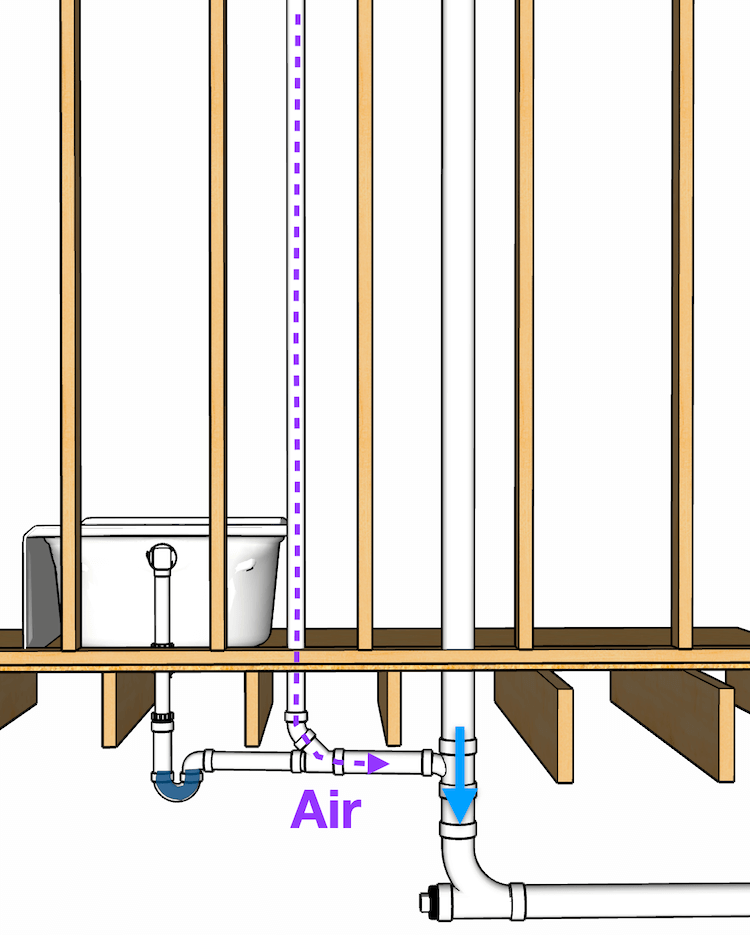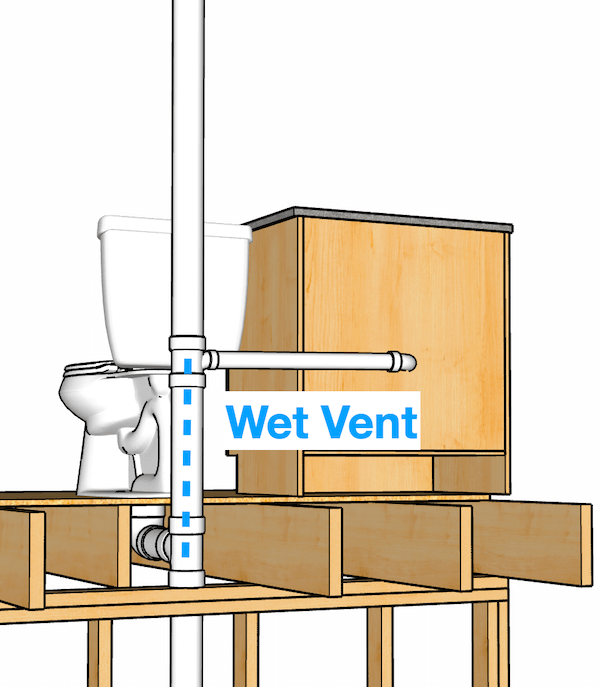Proper Ventilation in Plumbing Systems: Why It Is Important
Schedule NowOn this page in the next paragraphs yow will discover more amazing tips related to What Is a Plumbing Vent and Why Is It Important.

Appropriate air flow in plumbing systems is frequently neglected, yet it is important for maintaining the functionality and safety and security of your home's pipes. Ventilation helps manage atmospheric pressure, protect against the accumulation of unsafe gases, and make sure the efficient elimination of waste. In this overview, we will explore the significance of appropriate plumbing air flow, just how it functions, and the benefits it offers your pipes system.
Recognizing Air Flow in Plumbing
Ventilation in pipes describes the network of pipelines that permit air to flow via the drainage system. These vents serve several purposes, including controling atmospheric pressure within the pipes, stopping drain gases from going into the home, and helping in the smooth flow of wastewater.
How Air Flow Functions in Plumbing Equipments
Atmospheric Pressure Regulation
Proper air flow preserves balanced air pressure within the plumbing system. When water moves through pipelines, it displaces air. Without appropriate ventilation, this variation can produce negative pressure, bring about slow down drains or siphoning of water from catches, which can trigger unpleasant smells to permeate into the home.
Protecting Against Sewer Gas Accumulation
Among the most critical functions of plumbing vents is to prevent drain gases, such as methane and hydrogen sulfide, from accumulating within the home. These gases can position serious wellness risks and are highly flammable. Vent pipelines allow these gases to run away safely outdoors.
Assisting in Waste Removal
Air flow helps in the effective removal of wastewater by preventing airlocks in the drain system. When air can stream easily through the vents, it permits water and waste to flow smoothly via the pipes, decreasing the danger of clogs and back-ups.
Types of Pipes Vents
Key Heap Vent
The main pile air vent, additionally known as the air vent stack, is the main vent in a plumbing system. It extends from the main drainpipe align with the roof covering, permitting gases to run away and fresh air to get in the system.
Branch Vent
Branch vents link to the primary pile vent and serve specific components, such as sinks, commodes, and showers. These vents guarantee that each fixture has ample air flow to function appropriately.
Air Admission Shutoff (AAV).
An Air Admission Shutoff (AAV) is a one-way shutoff that permits air to go into the plumbing system without the requirement for a standard air vent pipe extending through the roof. AAVs are commonly used in remodellings or areas where setting up a conventional vent is impractical.
Indicators of Poor Air Flow in Plumbing.
Slow Draining Fixtures.
If your sinks, bathtubs, or toilets are draining pipes gradually, maybe an indicator of inadequate ventilation. Poor air flow can develop a vacuum cleaner impact, making it difficult for water to drain correctly.
Gurgling Sounds.
Gurgling audios originating from drains pipes are commonly a result of air being drawn through water catches as a result of negative stress in the pipelines. This is a clear indicator of inadequate air flow.
Unpleasant Odors.
Drain smells inside your home are a red flag that your plumbing system is not appropriately aerated. This can suggest that drain gases are not being appropriately vented outside, leading to potentially hazardous problems.
Typical Air Flow Mistakes.
Poor Vent Sizing.
Making use of small air vent pipes can lead to poor air flow and pressure discrepancies in the system. It's essential to utilize vents that meet the specific requirements of your pipes system.
Improper Vent Positioning.
Putting vents too much from the fixtures they offer can minimize their effectiveness. Correct placement ensures that air can move freely and successfully with the system.
Disregarding Code Demands.
Building codes give specific standards for pipes air flow. Disregarding these codes can cause a system that stops working to work appropriately and might result in expensive fixings or health hazards.
Advantages of Correct Ventilation.
Improved System Effectiveness.
Correctly ventilated pipes systems run more effectively, with less clogs, faster draining pipes, and less stress on the pipes. This efficiency extends the lifespan of the pipes system.
Improved Air Top Quality.
By preventing sewer gases from entering your home, correct air flow adds to far better indoor air quality, making your living setting healthier and a lot more comfortable.
Preventing Water Damage.
Adequate air flow helps protect against water from being siphoned out of traps, which can result in sewage system gases going into the home and causing water damages over time.
Steps to Make Sure Proper Ventilation.
Consulting Pipes Codes.
Always get in touch with regional pipes codes when making or modifying your pipes system. These codes supply the required standards for correct venting and guarantee your system meets safety requirements.
Normal Inspection and Maintenance.
Routine assessments can aid recognize possible ventilation issues before they become major problems. Maintenance tasks, such as cleaning air vent pipelines and looking for obstructions, are necessary for maintaining the system in good working order.
Expert Setup.
For new installations or significant adjustments, it's smart to employ a professional plumber. They have the knowledge to ensure the air flow system is appropriately developed and mounted according to code.
Conclusion.
Proper air flow is a critical part of any kind of plumbing system, ensuring that it functions efficiently and safely. By understanding the value of air flow, acknowledging the indications of inadequate air flow, and taking steps to preserve your system, you can protect against costly issues and secure your home's air high quality.
4 Things You Should Know About Your Plumbing Vents
What Plumbing Vents Are
Also called a vent stack, a plumbing vent is a vertical pipe attached to your drain line that runs through your roof. The plumbing vent pipe, or plumbing air vent, removes gas and odors from your plumbing system and allows fresh air to enter the pipes, helping the water to flow out of the drain pipes.
What Plumbing Vents Do
Plumbing vents have two basic functions. One of which is to allow unpleasant smelling wastewater and sewer gasses to escape your plumbing system instead of entering your home. Plumbing vent pipes are typically located on roofs, away from windows, to ensure the fumes exit the home completely.
The other function of the plumbing vent is to move fresh air into your plumbing system. This helps move water through every plumbing fixture in your house, like toilets and sink drains. Think of the way in which you need to let a little air into the bottle as you pour soda in order to make the drink flow smoothly.
Different Types of Plumbing Vents
True vent: This is the most common vent option. In simplest terms, a true vent is a vertical pipe attached to your drain line that exits through the roof. They often function as the main vent that other fixtures can connect to. Re-vent pipe or auxiliary vent: Attached to the drain line near specific plumbing fixtures, re-vent pipes run up and over to connect to the main vent. Common vent: Two plumbing fixtures installed on opposite sides of a wall are typically tied into the vent stack using something known as a sanitary cross. Wet vent: This venting option operates as a drain pipe and a vent at the same time. Wet vent drainage systems drain water from one fixture while venting the air from another. Although they’ve been used for over 100 years, wet vent systems have only recently been added to the plumbing code in many areas. If you’re planning on installing one in a bathroom remodel, make sure you check your local code prior to construction. Loop vent: For free-standing fixtures like kitchen island sinks, loop vents are ideal. These vent pipes run under the floor, rise from the P-trap, and create a loop inside the cabinet sink. Air admittance valve: An AAV is a one-way mechanical valve typically installed at the site of the plumbing fixture. AAVs allow venting to occur without having to tie into a larger venting system. They’re ideal for venting fixtures where you aren’t able to easily connect to an existing vent system. Common Plumbing Vent Issues
Although vent pipes typically don’t have water flowing through them, they’re still subject to many typical plumbing issues. For example, clogs are one of the most common problems associated with sewer vent pipes. If your vent pipe gets clogged, all of your plumbing fixtures tied into the vent stack will be affected.
A sink with a slow drain that bubbles and gurgles or a strong sewage smell around your toilet are both indicators that your toilet vent pipe is clogged. Because most vent pipes exit through the roof, old leaves, twigs or even a bird’s nest could be clogging the pipe.
Clogs in your vent pipe system cause a buildup of negative pressure, meaning that water won’t be able to flow out of your home very well. It’s similar to putting your finger over the opening of a straw to trap water inside. When you remove your finger, the water is able to flow out of the straw.
If you suspect you have any blockage in your vent, make sure you have a professional come examine the situation. Left unchecked, a blocked air vent can lead to other costly repairs, like leaks and sediment buildup.
Under Pressure
Pipe vents are essential aspects of a home’s plumbing system. Owning a home means learning about all sorts of things you never put much thought into before. But by understanding as much as you can about the important systems of your home, you can keep those budgets intact and those anxiety levels low.
https://www.homeserve.com/en-us/blog/home-improvement/plumbing-vents/

I am just very enthusiastic about What Are Plumbing Vents and Why Are They Important? and I am assuming you enjoyed reading the new blog post. Appreciated our review? Please share it. Help others discover it. Thank you for your time spent reading it.
Information Here